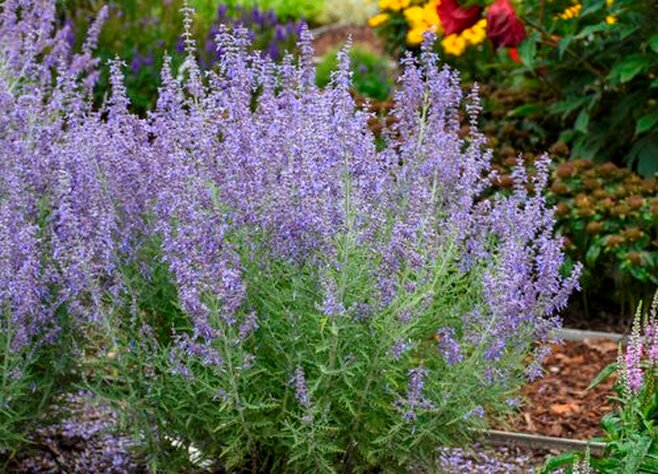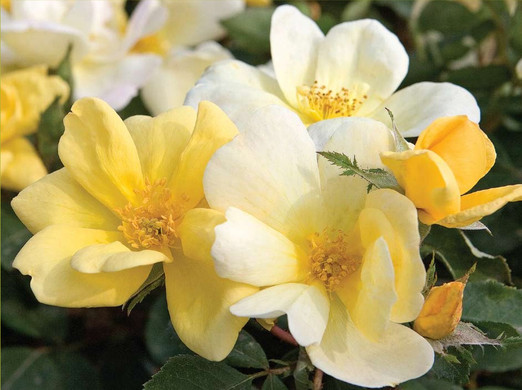|
3/9/2020 4 Comments Spring PruningEvery year about this time, gardeners stand in their yards with pruners in hand ready to cut, whack, saw, and do the meatball. But wait. Not all woody plants should be pruned the same way or at the same time. Other gardeners are intimidated with pruning, get out the hedge sheers or prefer to do nothing. No matter which you are, these helpful tips will boost your confidence and arm you with the know-how to make the right cuts. Pruning Basics
The Unprunables * Some shrubs can be intimidating even for experienced gardeners. Elderberry, Flowering Quince, Forsythia, Mock Orange, and Weigela can be pruned using three different techniques. One is known as rejuvenation which involves cutting all the branches back hard to about 6 inches from the ground. This stimulates an explosion of new growth and is best used when shrubs have grown out of control. If this is too drastic for you, break it into a three-year plan. Every year for three years, remove one-third of the oldest canes to the ground level. By year three, you'll have a completely new, nicely-shaped, healthy shrub. The other two methods for the unprunables are described here. Other Tips & Resources
Fruit Tree Care in Spring
We get lots of questions every spring about fruit trees, including when and how to prune. The following should help answer your questions:
Tracy Hankwitz, horticulturist and General Manager at Burlington Garden Center.
4 Comments
2/24/2020 0 Comments Book Review: A Way to Garden Conception. Birth. Youth. Adulthood. Senescence. Death & Afterlife. These stages of life that we experience are used in Margaret Roach's book to describe a plant's life cycle through the year. That in itself tells the reader this is a very special book. First published in 1998, this updated edition contains new information. Following are examples of her breadth of garden wisdom. CONCEPTION: In this first chapter of A Way to Garden, Margaret tackles two topics that can be intimidating to the gardener: scientific names and pruning. Her tips on keeping deer away will empower you to finally take the necessary action to keep deer out of your yard. One of my favorite design tips she shares is to think early, middle, late when placing online orders. For example, if you are buying a lilac, do your homework and order three varieties with overlapping bloom times to extend that captivating season of fragrance. BIRTH: The earth begins to awaken in March and April, and it starts indoors with seeds. An extensive seed-starting schedule and tips will answer questions that you may have. And it is here that we learn of Margaret's obsession with gold foliage and the red spring-flowering Pulmonaria rubra. She takes the mystery out of pruning Hydrangea and Clematis, and suggests alternatives to Forsythia. I whole-heartedly agree with her encouragement to learn to ID weeds. 'I do not think we have a prayer of subduing or at least outsmarting an opponent we are barely acquainted with.' One of her go-to websites is the University of California weed ID. You can find it here. YOUTH: The world is in it's youthful stage in May and June when all is fresh, new, and in bloom. Margaret writes of transplanting, self-sowers, and growing tomatoes and potatoes. These are the salad days where there just isn't enough space or time to grow all the wonderful varieties available. Her suggestion is to choose a few and set up a seed trial. Grown side by side, you can observe which ones do best in the conditions in your garden and which appeal most to your taste buds. One to look for: 'Merlot' leaf lettuce. Margaret reminds us that we aren't the only ones interested in what's growing in our gardens - rabbits, deer, and woodchucks often get their fill at our expense. How to tell what's been munching? Look for these clues: deer leave jagged edges, rabbits cut at a clean 45 degree angle. In this chapter, Margaret encourages us to underplant trees with living groundcovers designed in what she calls 'garden mosaics'. Watch the video below to hear her describe this refreshing concept. The year continues through 'A Way to Garden' book in adult, senescence, death and afterlife stages. Each page offers observations, tips, and techniques gathered from years of experience bound together in this garden treasury. 'I garden because I cannot help myself'.
- Margaret Roach If you can relate to that, this book is for you. * - Tracy Hankwitz is a horticulturist, and General Manager of Burlington Garden Center 2/9/2020 0 Comments Award-winning Plants for 2020It's always fun to see the plants that receive special recognition each year. This year is especially interesting as the perennial of the year and the hosta of the year are both shade lovers and both have striking chartreuse coloring. The 2020 Perennial of the Year, awarded by the Perennial Plant Association is Aralia 'Sun King' (shown above). 'Sun King' is a beautiful addition to the shade garden growing at least 3 feet tall and wide every year. In late summer it produces tiny white flowers that are followed by deep purplish black berries (that are inedible). 'Sun King' is deer resistant and the flowers attract honeybees. As you can see from the photo above, Hosta 'Dancing Queen' glows in the shade garden. Chosen by the American Hosta Association as this year's hosta of the year, the chartreuse foliage is stunning! The ruffled margins and deep, corrugated veins make her dance in the garden. She grows 22 inches tall and up to 40 inches wide. The International Herb Association is celebrating it's 25th anniversary this year and has chosen Rubus spp. as it's herb of the year. The Rubus family, which includes raspberries, blackberries, and other brambles, may not seem much like an herb, but the roots and canes have useful qualities in addition to the fruits. The leaves have medicinal qualities and have been used in teas. It's about time this yummy fruit gets some attention and is celebrated. Since 2016, Proven Winners has had their own set of award-winning plants. Those receiving top honors include Perovskia 'Denim and Lace' shown above. Euphorbia 'Diamond Frost'took top place among annuals, and Hydrangea 'Invincible Ruby' was chosen best among shrubs. To see their complete list of winners, click here. Finally, every year the National Garden Bureau declares it's Year of the . . .' for each category including vegetables, annuals, herbs, perennials, and flowering shrubs. This year has been deemed the Year of the Hydrangea. We can't think of a better choice! To see their complete list of winners, click here.
In August's early days, time seem to pause suspended in deep summer. The harvest stills momentarily, bees buzz on intoxicating nectar, and a relaxed mood dominates when it's too hot to do anything but sit in a hammock under the shade trees. It's during this time that landscapes are filled with the lacey blossoms of hydrangeas. Some have been blooming since June, but by now there should be a pretty display of white, blush, pink, mauve and even deep red varieties. The selection is vast and can be confusing as to which one to choose. Following is an explanation of hydrangea types. Read on to discover the one that is best for your landscape. Smooth Hydrangeas (Hydrangea arborescens) are better known as Anabelles and are native to the south eastern part of the US. They are the earliest blooming group typically showing flowers in June. Annabelle's family is quickly growing as more members are introduced such as 'Lil' Annie', 'Wee White', 'Incrediball', 'Invincibelle Spirit, and 'Ruby', and 'Mini Mauvette'. Newer versions of Annabelle have either sturdier stems, larger flowers, or a more compact habit. Flower colors are either white or pink and do not respond to soil pH levels. Most hydrangeas in this group can take sun or part shade. CARE TIP: flowers on new wood; prune back to 18" in late fall or early spring. Big Leaf (Hydrangea macrophylla), also known as mopheads, have large colorful balls of florets. Plant in morning sun and afternoon shade, and playing with the soil pH can generally change the colors from blue, purple, and pink. Mature sizes range from 3-4' tall. CARE TIP: Most macrophyllas die back to the ground every year in our area. In spring, prune off dead wood and fertilize. Varieties to look for: any from the 'Cape Cod' series are hardy to zone 4 and are beautiful! Panicle Hydrangeas (Hydrangea paniculata) are woody shrubs that can take six or more hours of sun, and have large, cone-shaped flowers ranging from white to shades of pink and red. 'Quick Fire' is the earliest blooming variety, but by August they all are spectacular! Need something compact? Look for 'Bobo', 'Little Quickfire', and 'Little Lime'. Other varieties can grow 6-8' tall making a great living screen. 'Zinfin Doll' and 'Pink Diamond' are among the fragrant varieties. Many panicle hydrangeas are now available in tree form making them the perfect focal point in a small space garden. CARE TIP: Prune back by one third in early spring. Mountain (Hydrangea serrata) is a smaller group of hydrangeas originating from the mountains of eastern Asia and are hardy to zone 5. The lace-cap flowers are purple or pink depending on the soil pH. Mountain hydrangeas like morning sun for best flowering which bloom on old and new wood ensuring new flowers all season long. Leaves from the 3'x3' shrubs are used in tea. A variety to look for is 'Tuff Stuff' from Proven Winners. The final group of hydrangeas is Oakleaf (Hydrangea quercifoia). The leaves resemble oak leaves, and the panicles of flowers are lovely lace-like florets in whites maturing to mauves. Leaves turn a deep burgundy in fall adding another element of interest. When grown in full sun to part shade, they can mature 4-6 feet in height. A variety to look for is 'Jetstream'.
Hydrangeas not only add grace to the late summer garden, but cut stems of most varieties can be enjoyed indoors fresh or dried. 8/22/2014 1 Comment Design Tip: Burgundy BluesBurgundy foliage in the garden can be used most effectively when paired with the right hues. First, be mindful of your backdrop. Dark leaves don't show up on dark backgrounds. They just don't, so don't put them there. If you have a dark-red brick house, don't plant a ninebark against it. The burgundy leaves of the ninebark will show off much better against white or gray. My favorite way to use burgundy foliage is to pair it with blue - blue hostas in shade, blue grasses and blue evergreens in sunny spots. Below left is 'Little Devil' Ninebark (Physocarpus opifolius) and 'Shining Sensation' Weigela (right) with 'Prairie Sky' switchgrass (Panicum virgatum) in the middle' and 'Northwind' switchgrass. (shown in next collage). Add the blush flower heads of Hydrangea 'Quick Fire' or 'Limelight' (center), and the blue-green needles of a Juniper (left) and you have the perfect recipe for a sunny, low-maintenance shrub border. - Tracy Hankwitz, BGC Store Manager
5/2/2014 2 Comments Mother's Day Bud 'n BloomsMother's Day (May 11) is just around the corner and fortunately, so are these gorgeous hydrangeas with their lovely blue hues. It's Bloomstruck, the new hydrangea in the Endless Summer series. Bred by Dr. Michael Dirr, this reblooming hydrangea macrophylla lives up to its promise of endless blooms. It blooms on old and new wood, grows 3-4' tall, 4-5' wide, and has great disease resistance. Like other big leaf hydrangeas, it prefers a spot with afternoon shade. Bloomstruck's flowers can be pink, purple or blue, depending on the soil pH. To keep that fabulous blue color, add aluminum sulfate to the soil. * Other bud 'n bloom gifts for mom here at BGC: 'Sweet Fragrance' Easy Elegance Rose has the buds of a hybrid tea that open to a swirl of apricot petals and intoxicating fragrance. * 'Paint the Town' Easy Elegance rose is everblooming with clusters of double-petaled blossoms. It's spreading and mounding habit make it suitable for landscapes as well as in containers. * 'Sunny Knockout' Rose has bright yellow flowers that age to a pastel cream. It's the only Knockout rose that is fragrant. Blooms all summer and grows 3-4' tall, 3-4' wide.
* photos courtesy of Bailey and Willoway Nurseries |
|
|
STORE INFO
5205 Mormon Road Burlington, WI 53105 262.763.2153 |























